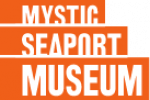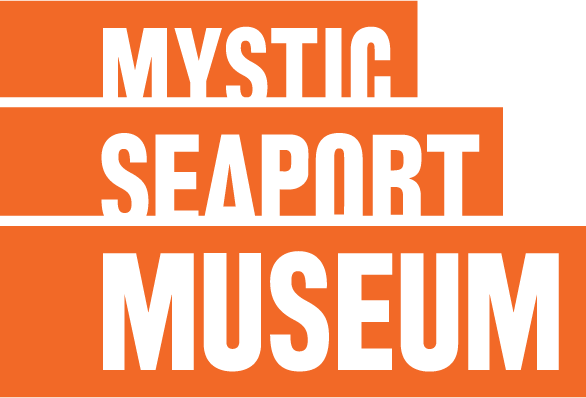The Solution to One of History’s Greatest Technical Challenges
Produced by the National Maritime Museum, London
Proudly sponsored by United Technologies Corporation
On Exhibit September 19, 2015 – March 28, 2016
Mystic, Conn. (August 20, 2015)—Mystic Seaport proudly presents “Ships, Clocks & Stars: The Quest for Longitude”, on tour from England for a limited time only. The award-winning exhibition, produced by the National Maritime Museum in London and sponsored by United Technologies Corp., reveals the race to determine longitude at sea. Spurred on by the promise of rich rewards, astronomers, philosophers, and artisans—including John Harrison and his innovative timekeepers—finally solved one of the greatest technical challenges of the 18th century.
For centuries, longitude (east-west position) was a matter of life and death at sea. Ships that went off course had no way to rediscover their longitude. With no known location, they might smash into underwater obstacles or be forever lost at sea. For a maritime nation such as Britain, growing investment in long distance trade, outposts and settlements overseas made the ability to accurately determine a ship’s longitude increasingly important.
“Ships, Clocks & Stars” celebrates the 300th anniversary of the British Longitude Act of 1714, which offered a huge prize for any practical way to determine longitude at sea. The longitude problem was so difficult that—despite that incentive—it took five decades to solve it. Through the latest research and extraordinary, historic artifacts—many from the collection of the National Maritime Museum and never before displayed outside the UK—the exhibition tells the story of the clockmakers, astronomers, naval officers, and others who pursued the long “quest for longitude” to ultimate success.
In recent years, John Harrison has been cast as the hero of the story, not least in Dava Sobel’s bestselling book Longitude: The True Story of a Lone Genius Who Solved the Greatest Scientific Problem of His Time. “Ships, Clocks & Stars” provides a new perspective on this famous tale. While John Harrison makes a good story and his marine sea-watch was vital to finally solving the problem of longitude, this was against a backdrop of almost unprecedented collaboration and investment. Famous names such as Galileo, Isaac Newton, James Cook, and William Bligh all feature in this fascinating and complex history. Crucially, it was Astronomer Royal Nevil Maskelyne’s observations and work on the Nautical Almanac at the Royal Observatory in Greenwich that demonstrated the complementary nature of astronomical and timekeeper methods. Combined, the two methods lead to the successful determination of longitude at sea and changed our understanding of the world.
“Mystic Seaport is very proud to bring ‘Ships, Clocks & Stars’ to New England to tell this important story of scientific discovery, innovation, creativity, perseverance, and even adventure as different parties raced to find a solution,” said Steve White, president of Mystic Seaport. “This exhibit is more than the story of longitude: it is the story of human problem-solving, and it is as relevant today as it was in the eighteenth century.”
Exhibition Highlights
- Clockmaker John Harrison’s H4 marine sea-watch, considered his greatest masterpiece
- Working replicas of Harrison’s magnificent earlier H1, H2, and H3 timekeepers
- The original 1714 Longitude Act
- Astronomical tables developed by Nevil Maskelyne, the Astronomer Royal
- Early sextants, octants, and other instruments
- Paintings from Captain Cook’s Pacific voyages
- Rare items from William Bligh’s journey after he was put off the Bounty
- Detailed models of Cook’s and Bligh’s ships
- Digital displays throughout the exhibition bring key longitude concepts and materials to light
“Ships Clocks & Stars” will be open in the R.J. Schaefer Building from September 19 to March 28, 2016. Entry to the exhibit is included in the Museum’s general admission. Mystic Seaport will return to a year-round operating schedule in 2016 and be open Thursday-Sunday during January-March.
Related Programs
“Finding Longitude”
Thursday, September 17, 7 p.m.
Dr. Richard Dunn, Senior Curator for the History of Science at the National Maritime Museum, London, will give a presentation on the exhibit’s story of inspiration and invention, collaboration and competition that finally saw the problem of determining longitude at sea solved in the wake of the British Longitude Act of 1714.
Admission is free for Museum members; $15 for non-members. Please call 860.572.5331 to register.
Treworgy Planetarium: “Longitude: Proof in the Pacific”
Daily, Check for Times and Prices
This show takes the audience along with the famous explorer Captain James Cook on his first two voyages of discovery in the Pacific. The program will display the stars and astronomical phenomena that helped guide his expeditions and demonstrate the impact improved technology had on their ability to navigate.
Recommended for all ages.
Online Resources
About Mystic Seaport
Mystic Seaport is the nation’s leading maritime museum. Founded in 1929, the Museum is home to four National Historic Landmark vessels, including the Charles W. Morgan, America’s oldest commercial ship and the last wooden whaleship in the world. The Museum’s collection of more than two million artifacts includes more than 500 historic vessels and one of the largest collections of maritime photography in the country. The state-of-the-art Collections Research Center at Mystic Seaport provides scholars and researchers from around the world access to the Museum’s renowned archives. Mystic Seaport is located one mile south of Exit 90 off I-95 in Mystic, CT. Admission is $25 for adults and $16 for children ages 6-17. Museum members and children 5 and under are admitted free. For more information, please visit https://mysticseaport.wpengine.com/ and follow Mystic Seaport on Facebook, Twitter, and YouTube.
About the National Maritime Museum, London
The National Maritime Museum holds the world’s largest maritime collection, housed in historic buildings forming part of the Maritime Greenwich World Heritage Site. The National Maritime Museum is part of Royal Museums Greenwich which also incorporates the Royal Observatory Greenwich, the 17th-century Queen’s House, and the Cutty Sark. Royal Museums Greenwich works to illustrate for everyone the importance of the sea, ships, time and the stars and their relationship with people. This unique collection of attractions welcomes over 2 million British and international visitors a year and is also a major center of education and research. For more information visit www.rmg.co.uk
About United Technologies
A global leader in the aerospace and commercial building industries, United Technologies provides products that set the standard for performance, reliability and energy efficiency. Its aerospace businesses include Pratt & Whitney aircraft engines, UTC Aerospace Systems products and services, and Sikorsky helicopters. UTC is the world’s largest provider of building technologies. Its commercial businesses include Otis elevators and escalators; Carrier heating, air conditioning and refrigeration systems; and fire and security solutions from brands such as Kidde and Chubb. The company also operates a central research organization that pursues technologies for improving the performance, energy efficiency and cost of UTC products and processes. To learn more, visit www.utc.com


